
“I wonder how it came to pass that most of the billionaires in Ukraine are Jews?”—Dmytro Yarosh, former People’s Deputy of Ukraine
Part III in series on Ukranian fascism. See Part 1 and Part 2.
In the West, the 2022 war has often been portrayed as a struggle between autocracy and democracy. The Ukrainians are the ones standing on the side of freedom, infuriating Vladimir Putin, who cannot tolerate a shining beacon of democracy in his backyard.
Indeed, some journalists and pundits even claim that Ukrainian democracy is why Putin invaded, fearing that the Russian people would follow Ukraine’s alleged example and throw him out.
But this narrative—no matter how beloved by U.S. corporate media or endlessly repeated by the State Department—is a fantasy. History has shown us that the Ukrainian government’s commitment to democracy is dubious or non-existent. Ukraine currently has more banned political parties than legal ones; political repression and imprisonment of dissidents has been commonplace ever since its independence; and both the government and its affiliated party militias routinely resort to violence to quell peaceful protests while turning a blind eye to violence inflicted on Jews and other racial and ethnic minorities.

The fall of the Soviet Union and the Communist Bloc in 1991 was supposed to usher in a great new era of history—“the end of history,” as Francis Fukuyama proclaimed. Unfortunately, however, it provided an opportunity for the old gladiators, or fascist network in the Organization of Ukrainian Nationalists (OUN), a paramilitary movement headed by the anti-Semitic, fascist, Nazi collaborator and war criminal Stepan Bandera, to complete the job they had spent seven decades preparing for.
In other words, the collapse of the Soviet Union represented for them an opportunity to start a new war—the first being World War II and the Cold War—and to seize power finally and implement their vision.
Starting in 2004 with the Orange Revolution, Ukrainian society has been embroiled in a nearly two-decade long era of chaos and bloodshed, the grisly results of which we see in the current war. Slava Stetsko’s CIA-backed Congress of Ukrainian Nationalists (KUN) was there for all of it, starting from the street protests in 2004 to the Maidan coup in 2014 and the bloody repression of the Donbas which followed.
Ukrainian Democracy
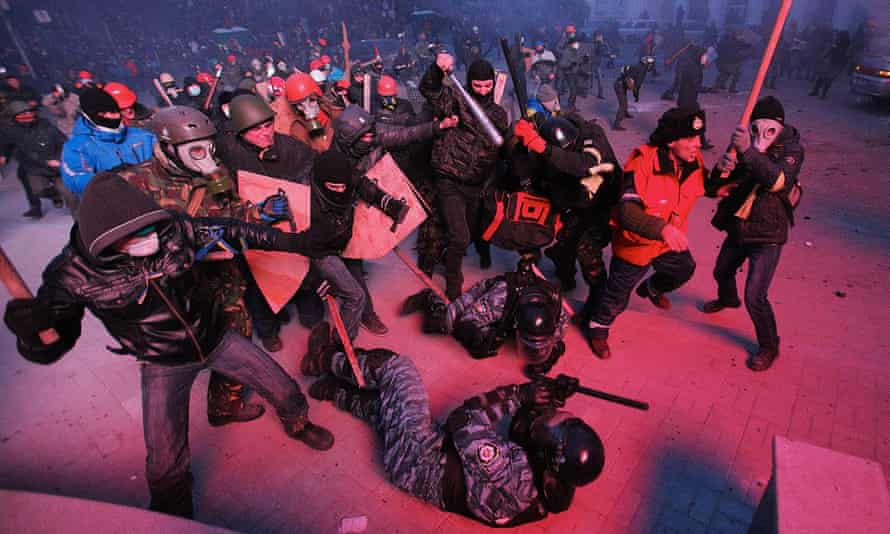
The first efforts from Leonid Kuchma and Leonid Kravchuk mostly involved the repression of the Communist Party of Ukraine, which was the largest and most successful party in Ukraine during the 1990s.
The Communists won elections in 1994 (the first they contested after their ban was overturned) and again in a very decisive manner in 1998. Despite this, Kuchma and Kravchuk succeeded at keeping the Communists out of power, drawing on help from both Yeltsin’s Russia and NATO.
After the fall of the USSR, the newly independent Ukraine lacked a constitution until 1996. As the Communists held a majority in parliament, they were able to mount a substantial resistance to Kuchma and Kravchuk’s proposed constitutions. The Communists mostly demanded the continuance of Soviet-era social and welfare programs, along with jobs guarantees as Ukrainian state industry fell into the hands of gangster “oligarchs.”
The Communists held the line ideologically and were steadily gaining strength, so Kuchma finally resorted to dirty tricks. He expelled the Communists from the debate and forced more than 6,000 changes to their proposed constitution before ratifying a deal under the threat of dissolution of Parliament, as Yeltsin had done.
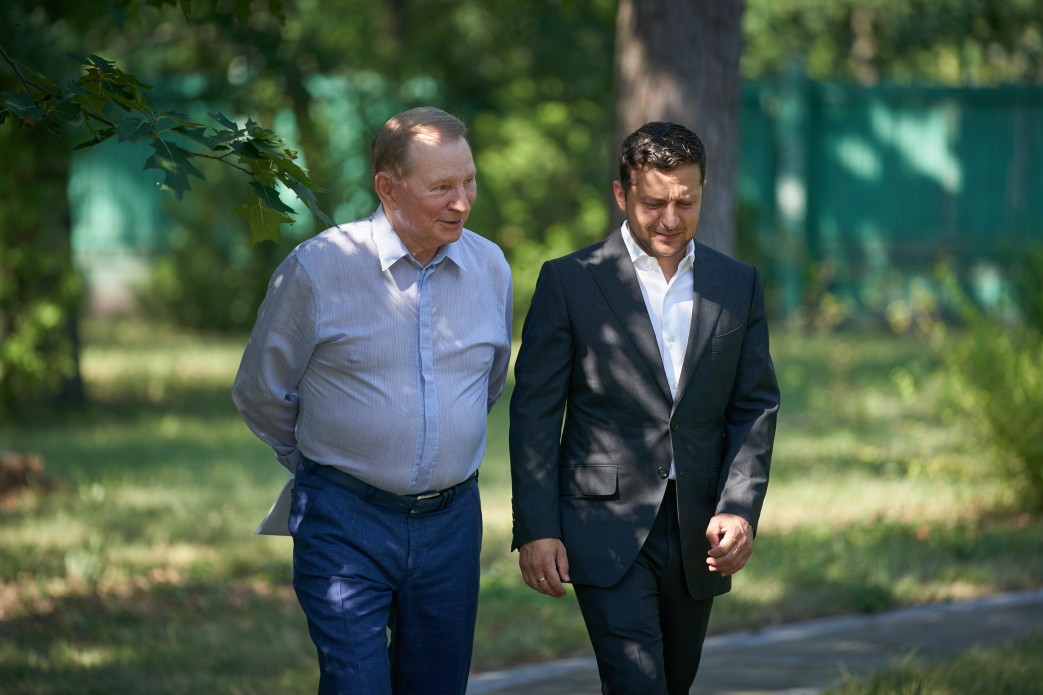
Even this was not enough to put down the Communists. In the 1999 presidential election, facing certain defeat, Kuchma had to resort to outright ballot stuffing to retain power, according to the Organization for Security and Cooperation in Europe (OSCE) observation mission. In 2000, Kuchma helped to finally put a dagger into the heart of the KPU after he helped convince factions of the party to split, siphoning off votes and preventing the Communists from reaching critical mass in the future.
The far right did not face the same sort of repression. Despite both Kravchuk and Kuchma looting the country after enacting a Yeltsin-style mass privatization program, they enjoyed widespread support among the far right. It was only when Leonid Kuchma was caught on tape ordering the murder of Georgiy Gongadze, a former right-wing terrorist and founder of Ukrayinska Pravda that the dam broke, and the rightists turned against the state.
The group Gongadze was a member of, the UNA-UNSO, was founded by Yurii Shukhevych, son of the infamous genocidaire Roman Shukhevych. They would later go on to be a founding member of the infamous neo-fascist alliance Right Sector along with Slava Stetsko’s KUN.
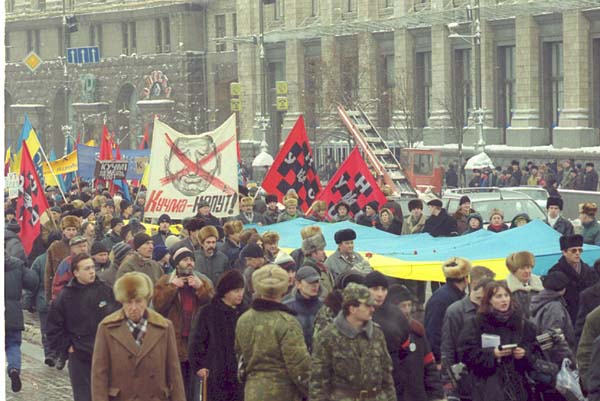
The resulting protest movement, called “Ukraine Without Kuchma,” was spearheaded by the far right and represented their first real dissent in post-Soviet Ukraine. The movement mostly limited itself to street protests and political pressure, but Kuchma’s deep unpopularity led to the movement spreading throughout the country.
Kuchma was term-limited and did not try to force the issue, fearing a critical mass of dissent. Instead, he put forward his Prime Minister and political protégé Viktor Yanukovych to run in his stead. The opposition viewed this as little more than a cynical attempt for Kuchma to continue his rule in all but name.
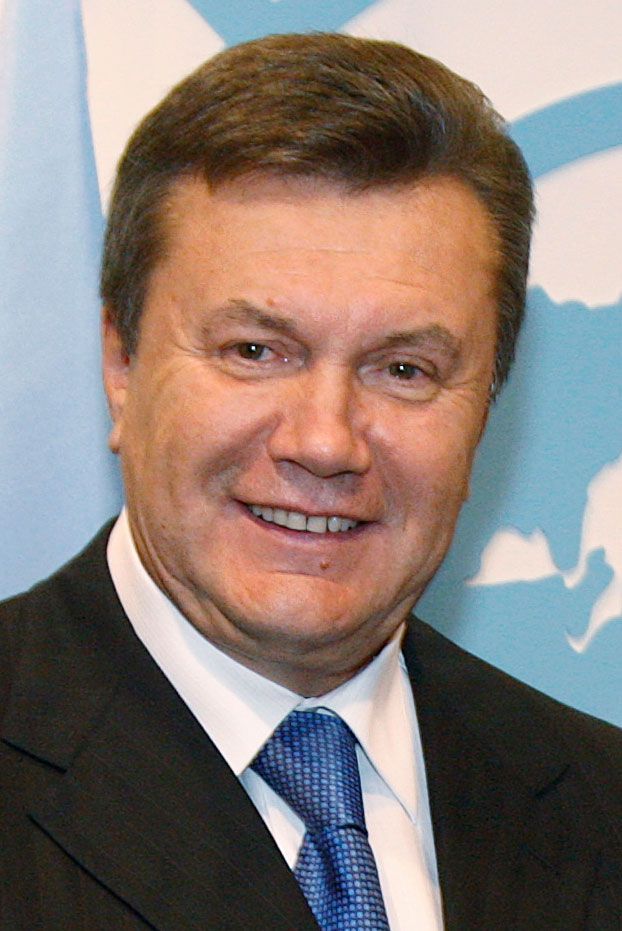
Yanukovych’s primary challenger was Viktor Yushchenko, a bank administrator turned prime minister who had become the leader and public face of the anti-Kuchma movement. Kuchma was so widely unpopular that Yushchenko was able to build a broad coalition party called “Our Ukraine,” eventually winning a plurality in 2002. The KUN took a prominent role in this new coalition, with Slava Stetsko listed third on Yushchenko’s party list prior to her death.

The stage was set for the highly contested 2004 presidential elections, which set in motion many of the events that would lead to the current war.
The Orange Revolution
“It’s time to bury the war hatchet and to forget where it lies”- Viktor Yushchenko
From this chaos, the election of 2004 gave birth to the Orange Revolution. It cannot be fairly called a nationalist movement, but it was a movement in which nationalists wielded most of the real power. The reality is that the government of Leonid Kuchma was corrupt, brutal, avaricious, and widely loathed by Ukrainians of all stripes.
Widespread dissent against Kuchma often led to strange bedfellows. While nationalists like KUN provided much of the muscle, the Communists had their own grievances with Kuchma and supported the movement initially. The KPU of 2004 was diminished but still a formidable force in Ukrainian politics, and it lent both numbers and credibility to the opposition.
Dissent would only grow when, in September 2004, Yushchenko was poisoned with Dioxin, resulting in his hospitalization and permanent disfigurement. While the perpetrators have never been caught, most of the opposition believed the Kuchma government was responsible.
As for Yushchenko’s politics, he was lavishly funded by the United States and favored entry into NATO as quickly as possible. Under this cloak of neo-liberal respectability, Yushchenko was also a staunch nationalist.
After his victory, Yushchenko embarked on a full rehabilitation of the Nazi collaborator OUN, which had been active participants in the Holocaust. Streets and cities were renamed, monuments to the fascist killers were erected throughout the country, and Yushchenko awarded hero of Ukraine to the infamous OUN commanders Stepan Bandera and even Roman Shukhevych, who once murdered 8,000 Poles in a single day, to widespread condemnation both at home and abroad.
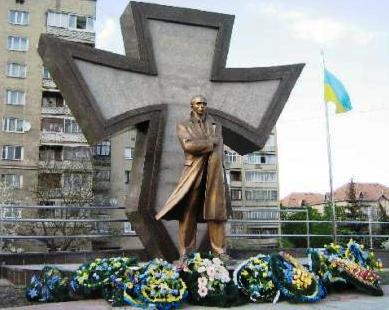
Initially, Yanukovych was victorious in the 2004 election, winning by a narrow margin in the runoff. The victory was widely seen as fraudulent with exit polls suggesting a Yushchenko victory and in response the opposition mobilized massive protests throughout Ukraine in what was dubbed the “Orange Revolution,” with Orange being the color of Yushchenko’s political party.
As many as 500,000 protesters took to the streets against the government with marches, strikes and rallies gripping the nation for about three months. Major oligarchs such as Petro Poroshenko and Yulia Tymoshenko supported the movement, leaving the government with few allies. Kuchma, once more fearing a revolution, withdrew his support of Yanukovych and the Ukrainian constitutional court annulled the election, ordering a re-vote on the 26th of December.
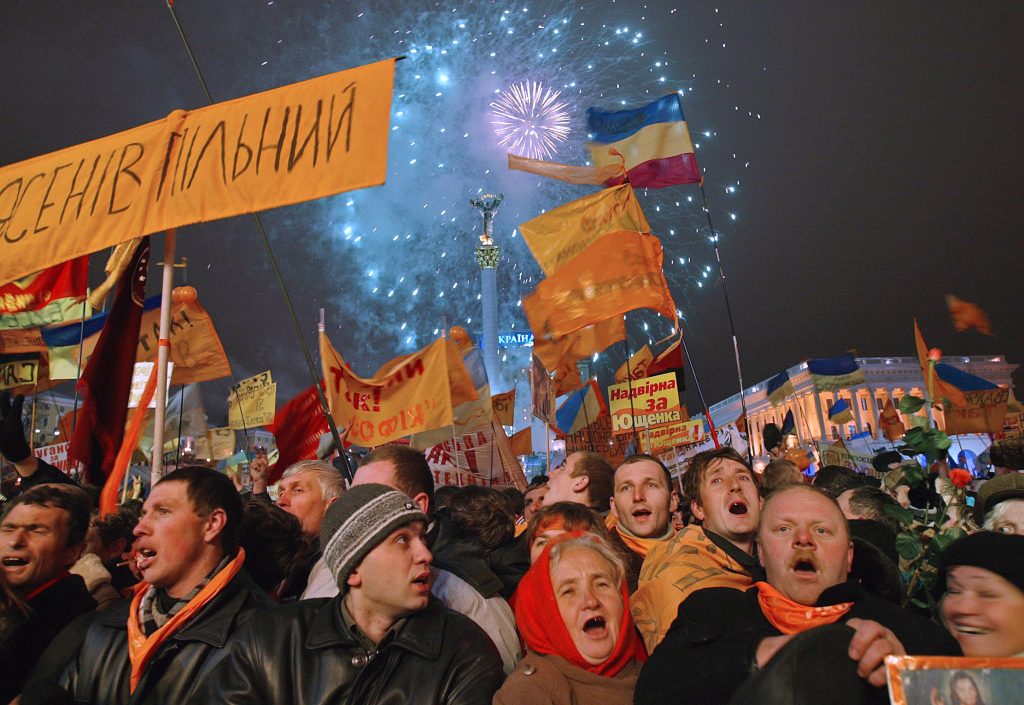
NATO was not idle in this revolution. Neither the U.S. nor the EU accepted the results of the first election, and the U.S. publicly supported Yushchenko. Publicly, the ABN-affiliated John McCain visited Kyiv alongside Henry Kissinger and Zbigniew Brzezinski, and Hillary Clinton went so far as to nominate both Yushchenko and future Georgian president Mikheil Saakashvili for the Nobel Peace Prize. Privately, the U.S. provided both enormous financial and technical support to their chosen candidates.

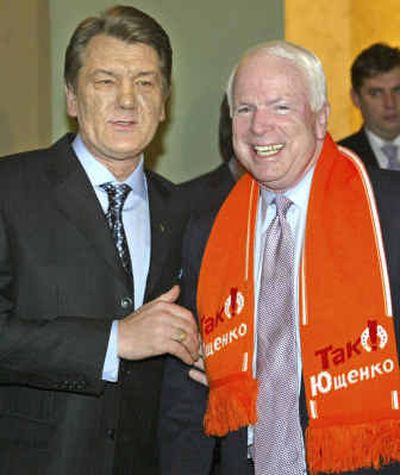
The second time around, Yushchenko won the election outright with a comfortable margin and the Orange Revolution took power in Ukraine.
Winning is not the same as governing, however, and Yushchenko’s coalition remained dangerously unstable. Political infighting characterized Yushchenko’s administration, with Tymoshenko often making plays for power before breaking entirely with Yushchenko.
The need to maintain a slim majority in Parliament grew so desperate that Yushchenko even brought the Communists into the coalition in 2007. This led to a right-wing revolt inside the party, leaving it with much less support than it started with. In the end, Yushchenko was not able to accomplish much and was eventually eclipsed by PM Yulia Tymoshenko.
Outside of the Rada, Yushchenko’s situation was much worse. The 2008 financial crisis absolutely devastated Ukraine. Russia cut gas supplies in 2009, the culmination of a long-running feud over gas debts and alleged theft. These two wounds collapsed the Ukrainian economy. Unemployment tripled, industrial output fell dramatically, and many large banks failed. Yushchenko’s popularity plunged in the aftermath.
By the time of the 2010 presidential election Yushchenko was so unpopular that he fell to fifth place with just 5% of the vote.
Viktor Yanukovych and his “Party of Regions,” on the other hand, capitalized on the chaos and incompetence of the Yushchenko administration and emerged victorious from the election which international observers certified as free and fair.
The ultimate failure of the Orange Revolution was a learning experience for the nationalists. They would not repeat the same mistake—leaving their fate to the whims of voters—next time.
The Gladius Unsheathed
“The historic mission of our nation in this critical moment is to lead the White Races of the world in a final crusade for their survival, a crusade against the Semite-led Untermenschen.” –Andriy Biletsky, Maidan activist and founder of Azov.
Yanukovych’s victory did little to calm the political situation in Ukraine. The nationalists were defeated, but by no means destroyed and the notoriously slippery Tymoshenko remained a potent political force. The 2010 race was close, with Tymoshenko receiving around 45% support to Yanukovych’s 48%, and her political party was the second largest in parliament.
While the drama continued in the Rada, Ukraine remained poor, corrupt, and deeply divided. Yanukovych made concessions to nationalists and moved toward closer ties with the EU. In 2014, the IMF asked Ukraine to dramatically raise taxes on essential goods and services while freezing wages and cutting social safety nets. The government refused these demands estimating that they could lead to the loss of hundreds of thousands of jobs.
It was this refusal that officially sparked the Euromaidan protests.
Initially small and peaceful, the Maidan grew rapidly and became more aggressive as time went on. The first mass movements took place on the 24th of November, and with them the first violence between police and protesters. Protesters charged police lines and, at midnight, special police squads unsuccessfully raided protest camps.
Fighting between the two sides only escalated, and on November 30th, the police attempted their largest raid yet. Police with clubs battled protesters. When the dust cleared, 80 had been injured, including 7 police officers, and 30 had been arrested. Among the injured were several Polish citizens.
The next day, fighting began in earnest. The so-called “Black Committees,” an alliance of far-right forces, used a forklift to break through police lines. Armed with hammers, chains and Molotov cocktails, they attacked police, seized the Kyiv city administration building and attacked the trade unions building. Among the Black Committees were Right Sector and Patriot of Ukraine, the group which would later become Azov. Despite initial claims of police provocation, the Black Committees would later claim responsibility for the attacks, in which hundreds were injured on both sides.
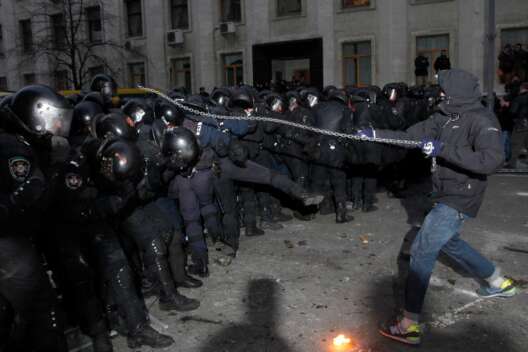
Fighting intensified from here, spreading nationwide, and the Black Committees coalesced into a more organized form, known as Maidan Self-Defense squads. Despite the benign name, these aggressive and violent armed groups gradually increased in both size and ambition and were able to overcome police in many areas, helped by ever-increasing police collaboration.
It was at this time that the monsters of the past crawled out from their lairs. The Congress of Ukrainian Nationalists, the direct descendants of CIA collaborator and Holocaust perpetrator Yaroslav Stetsko’s ABN, were heavily represented in these so-called “self-defense” forces.
Harkening back to the monstrous atrocities of their OUN forefathers, extreme brutality and attacks on leftists were calling cards of the Maidan “self-defense” forces. The most infamous example was seen in Odessa on May 5, 2014, in a night of violence that would have made Roman Shukhevych proud.
After cornering anti-fascist activists inside the Odessa Unions Building, Maidan “self-defense” forces pelted the building with Molotov cocktails, burning many of those hiding inside.

This woman was found naked from the waist down and burned. It is likely that she was raped, doused with gasoline, and burned alive by Maidan “self-defense” squads. After the fires went out, Maidan forces attacked the building. Much as their forefathers had done in Volyna, the fascists butchered survivors with hammers, axes and garrotes.

This pregnant woman was also among those murdered. She had come in to water the plants on her day off and was trapped inside by the attack. She was strangled to death with an electrical cord, a technique so common that the fascists named it the “Banderite garotte.” According to eyewitnesses, she resisted for some time, as her screams could be heard from the square below.
The charred and brutalized remains of 48 civilians were found inside the Odessa House of Trade Unions. None of the fascists responsible for these atrocities ever faced charges but were, instead, lauded by the state and media. Similar attacks occurred throughout Ukraine.

On February 20, 2014, snipers opened fire on the crowd from the Kyiv Philharmonic Building, which had been occupied by Maidan forces the night prior. 67 died and hundreds were wounded, with casualties on both sides. Maidan forces blamed Yanukovych, while Western intelligence suspected it to be a Maidan provocation.
Images of the bodies served to further swell Maidan forces across the country and, fearing a final collapse of his government, the beleaguered Yanukovych attempted a peace treaty with Maidan forces the next day. Right Sector refused to negotiate, however, and the fairly elected Yanukovych fled the country soon after. The Maidan was victorious, and a new government was quickly formed.
Maidan victory in Kiev did not mean Maidan victory in Ukraine, however. Maidan forces would find victory in the east far more elusive.
The Eastern Front
“I’m not a hero. My people are heroes. The ones who are on the front lines. I’m just their commander” -Mikhail “Givi” Tolstykh, commander of the 1st Separate Tank Battalion “Somalia.”
As the coup raged in the west, the Russian-speaking heart of Yanukovych’s support in eastern Ukraine looked on in terror. Maidan forces had spread rapidly throughout the country, and with the collapse of the government, Russian-speaking cities like Odessa burned.
While government structures broke down, police protection grew increasingly unreliable. With no pay and no clear leadership, much of Ukraine’s police force simply evaporated, unwilling to risk their lives for a government which no longer existed. The rest were forced to pick sides. Some joined with Kyiv, others stayed in their communities. Those who stayed were rapidly overwhelmed as the Maidan forces made the transition from Werwolf to Wehrmacht.
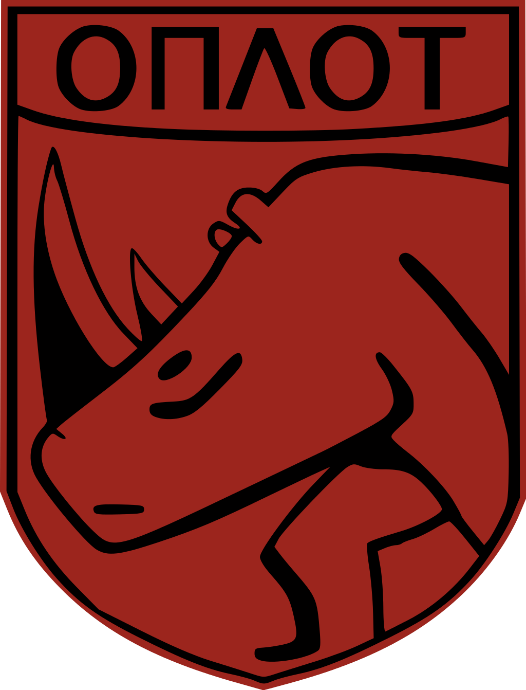
In response, various militias, self-defense, and paramilitary units arose from the east. At first the militias were often all that stood between the people of Donbas and the axes, hammers, and Molotov cocktails of the Maidan regime’s killers.
Starting out ad-hoc and lightly armed, the militias came from groups as diverse as soccer hooligans, Marxists, ex-MMA fighters, Russian Orthodox extremists, right-wing nationalists and more. They grew rapidly in both size and sophistication; many went on to become the basis of the current L/DPR military. Fighting only intensified, and in many parts of the country, the situation was descending into full civil war.
At first, the Army could provide little support to either side. As command and control broke down, units were left isolated and uncertain about what was happening. Yanukovych had mostly avoided using the army to suppress the Maidan, and by this stage, years of corruption and neglect meant cupboards were bare.
As the new regime consolidated its power, it set about restoring order. The man appointed to the job was crime boss turned interior minister Arsen Avakov. Despite his life of crime, Avakov was a veteran politician by this time. As regional administrator of Kharkiv prior to Maidan, he ruled with an iron fist with the help of Andriy Biletsky, the neo-Nazi founder of Azov and Patriot of Ukraine.
Biletsky commanded a group of soccer hooligans, turning them into a formidable street-fighting force ready to carry out Avakov’s bloody diktats. Attacks on migrant workers and Romani were particularly widespread. When the Maidan happened, Avakov pulled strings to free his friend Biletsky from prison, and he was an active participant in the Maidan coup.
Avakov’s new ministry contained not only Biletsky and his “Patriot of Ukraine,” but also representatives from the CIA-affiliated neo-Nazi Right Sector and Maidan Self-Defense.
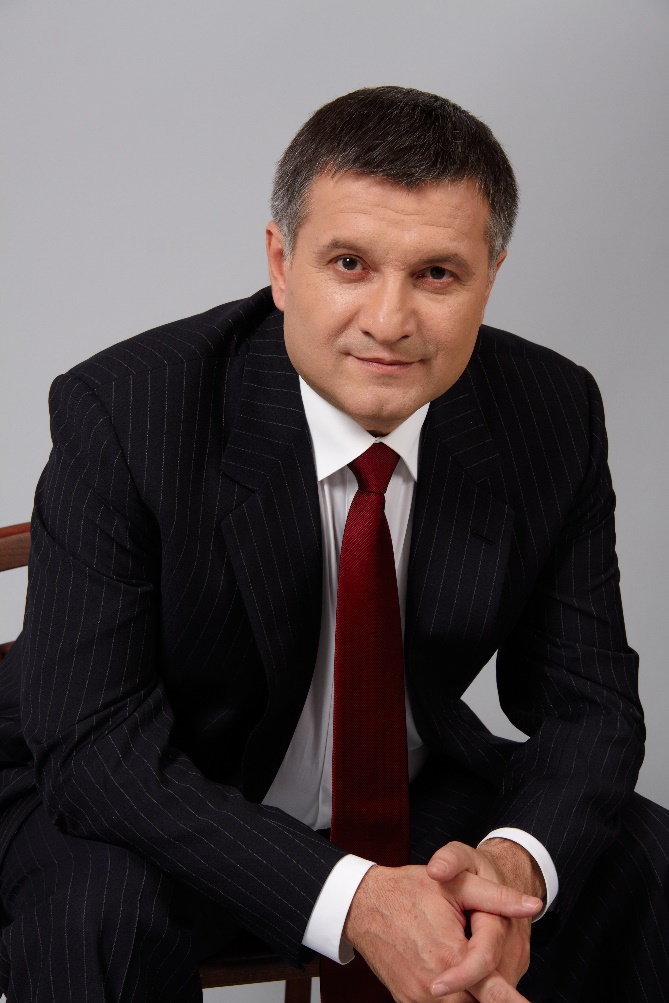
He faced a daunting task. The new Kyiv regime was falling apart, with democratically elected deputies in Kharkiv and elsewhere declaring independence. Avakov began the transfer of police bases and equipment to Right Sector forces, considerably bolstering their strength. Right Sector and other far-right groups began taking control of settlements, through threats when possible, and violence when necessary.
In Irpin, masked Right Sector activists threatened to murder the democratically elected representatives if they did not join the Kyiv regime.
“They shouted, they threatened us: If you do not raise your hand, we will cut off your hand, we will be at your home, we will deal with your families, with your property,”-Olga Oliynich, Irpin City Council member.
Still, this was not enough. The Donbas militias were digging in, and so Avakov escalated, attempting to mobilize the army. This very nearly doomed the Kyiv regime, as the rank-and-file soldiers revolted.
Rather than shoot their friends, relatives, and neighbors in eastern Ukraine, they went home. Roughly 70% of the Ukrainian army deserted or outright defected, with many of those passing their weapons and equipment down to the Donbas militias, or even joining the militias.
Now faced with the very real threat of a counter-revolution destroying his new regime, Avakov went back to the bag of tricks that had served him so well during his warlord-like rule of Kharkiv.
On April 15, 2015, Avakov founded the Special Tasks Patrol police, deputizing groups such as Biletsky’s Patriot of Ukraine and the Stetsko family’s CIA killers in the KUN. The new organization expanded rapidly, eventually encompassing 56 units drawn from the now vast ranks of neo-Nazi militias inside Ukraine.
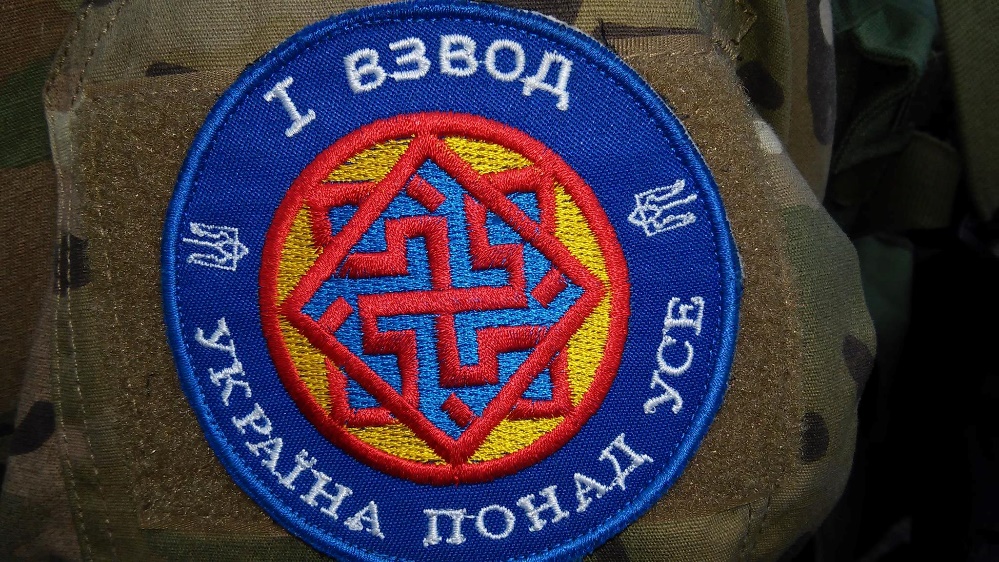
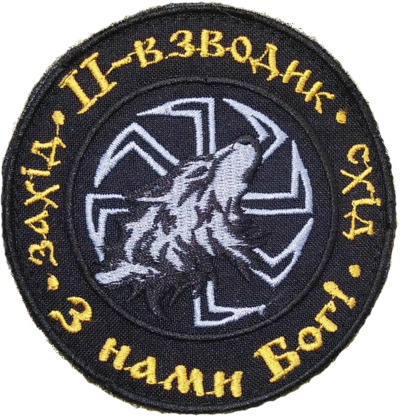
Much as their ancestors in the 1940s, the STPs are reprisal battalions. They cut a bloody swath through the Donbas, terrorizing the locals with the same elan as their forefathers in Nachtigal. They embarked on a campaign of torture, murder, rape (including raping children and the disabled), illegal detention, political repression, armed robbery, arson and more.
These units are still in operation, actively fighting against Russian forces today.
Very few of those responsible have ever faced consequences. Of those who have, most have now been released. An example would be the infamous “Tornado” unit of the STP. Accused, tried and convicted of crimes as ghastly as raping babies, evidence was so strong that even the Kyiv regime could not ignore it, and unit members languished in prison until released by the Zelensky regime.
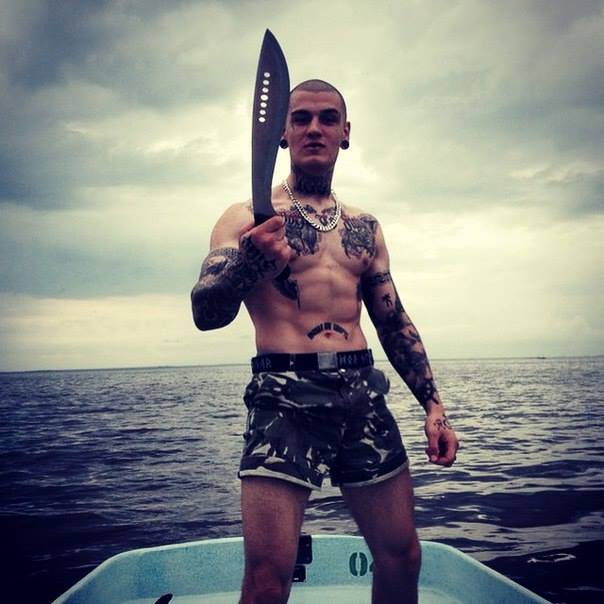
Today, men like Danyial al-Takbir, a neo-Nazi, former ISIS member and convicted mass murderer, rapist (several of his victims were raped until dead) and arsonist stand at the vanguard of a war planned for seven decades. This is the true legacy of the OUN, from its roots as Holocaust perpetrators and CIA assassins to its return as the butchers of Donbas.
The crimes of these units are vast enough to fill books. I cannot possibly catalog them all. Rather, I will leave you with the testimony of Lydia Bolbat, a former Tornado collaborator:
“Several times I have found myself in a situation where you give help to the military and start praying to God in order to be able to leave their place alive and well. It turns out I was not touched only because, according to some ‘thieves laws,’ the hand of the giver is not cut off. Shall I tell you how a dozen soldiers kidnapped a young girl and raped her during 10 days before the child died? Shall I tell how armed people came to the establishments of Mariupol and put a gun to the head of the owner, forcing them to feed them? And then for a month they every day had their parties there. How they slowed down every passing car on the roads and took a tribute from people. How did they participate in raiding operations? How did they keep people in basements and beat them, demanding money? The ugly truth? Nasty, isn’t it? But it was like that!”

CovertAction Magazine is made possible by subscriptions, orders and donations from readers like you.
Blow the Whistle on U.S. Imperialism
Click the whistle and donate
When you donate to CovertAction Magazine, you are supporting investigative journalism. Your contributions go directly to supporting the development, production, editing, and dissemination of the Magazine.
CovertAction Magazine does not receive corporate or government sponsorship. Yet, we hold a steadfast commitment to providing compensation for writers, editorial and technical support. Your support helps facilitate this compensation as well as increase the caliber of this work.
Please make a donation by clicking on the donate logo above and enter the amount and your credit or debit card information.
CovertAction Institute, Inc. (CAI) is a 501(c)(3) non-profit organization and your gift is tax-deductible for federal income purposes. CAI’s tax-exempt ID number is 87-2461683.
We sincerely thank you for your support.
Disclaimer: The contents of this article are the sole responsibility of the author(s). CovertAction Institute, Inc. (CAI), including its Board of Directors (BD), Editorial Board (EB), Advisory Board (AB), staff, volunteers and its projects (including CovertAction Magazine) are not responsible for any inaccurate or incorrect statement in this article. This article also does not necessarily represent the views the BD, the EB, the AB, staff, volunteers, or any members of its projects.
Differing viewpoints: CAM publishes articles with differing viewpoints in an effort to nurture vibrant debate and thoughtful critical analysis. Feel free to comment on the articles in the comment section and/or send your letters to the Editors, which we will publish in the Letters column.
Copyrighted Material: This web site may contain copyrighted material the use of which has not always been specifically authorized by the copyright owner. As a not-for-profit charitable organization incorporated in the State of New York, we are making such material available in an effort to advance the understanding of humanity’s problems and hopefully to help find solutions for those problems. We believe this constitutes a ‘fair use’ of any such copyrighted material as provided for in section 107 of the US Copyright Law. You can read more about ‘fair use’ and US Copyright Law at the Legal Information Institute of Cornell Law School.
Republishing: CovertAction Magazine (CAM) grants permission to cross-post CAM articles on not-for-profit community internet sites as long as the source is acknowledged together with a hyperlink to the original CovertAction Magazine article. Also, kindly let us know at info@CovertActionMagazine.com. For publication of CAM articles in print or other forms including commercial internet sites, contact: info@CovertActionMagazine.com.
By using this site, you agree to these terms above.
About the Author

Evan Reif was born in a small mining town in Western South Dakota as the son of a miner and a librarian.
His father’s struggles as a union organizer, and the community’s struggles with de-industrialization, nurtured Evan’s deep interest in left-wing politics. This, along with his love of history, made him a staunch anti-fascist.
When not writing, researching or working, Evan enjoys fishing, shooting, and Chinese cooking.
Evan can be reached at wharghoul@gmail.com.

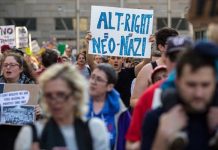
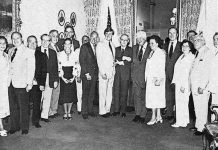
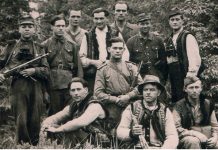

[…] l’égard des Ukrainiens russophones s’était déjà déchaînée pendant Maïdan avec une brutalité terrifiante et, dans les années qui ont suivi, elle s’est encore aggravée. Des milices néonazies […]
[…] The fall of the Soviet Union and the Communist Bloc in 1991 was supposed to usher in a great new era of history—“the end of history,” as Francis Fukuyama proclaimed. Unfortunately, however, it provided an opportunity for the old gladiators, or fascist network in the Organization of Ukrainian Nationalists (OUN), a paramilitary movement headed by the anti-Semitic, fascist, Nazi collaborator and war criminal Stepan Bandera, to complete the job they had spent seven decades preparing for. https://covertactionmagazine.com/2022/07/29/what-the-u-s-government-and-the-new-york-times-have-quie… […]
[…] de los nacionalistas hacia los ucranianos de habla rusa ya se había desatado durante Maidán con una brutalidad aterradora y en los años siguientes se volvería aún más fea. Las milicias neonazis como el Batallón […]
This should be read by most of the people who really want to know the truth on the present history of Ukraine. It’s given without anybody’s opinion- just facts. Thank you Evan Reif for such research.
[…] What the U.S. Govt and The NYT Have Quietly Agreed Not to Tell You About Ukraine, by Evan Reif […]
Once again, I want to thank you for your excellent work. I cited your previous two articles in a two-part series I wrote about Bandera, which was picked up by Greanville Post. If anyone is interested, they are here:
Part one: https://medium.com/@deborahlarmstrong/the-snake-from-his-lair-the-bloody-legacy-of-stepan-bandera-560d13734319
Part two: https://medium.com/@deborahlarmstrong/the-nightingales-bloody-roost-5587863e7c2e
I am currently working on a series about the indoctrination of children in Ukraine.
Part one: https://medium.com/@deborahlarmstrong/from-nurseries-to-nazis-fe3098b4f7d6
Evan Reif, Thank you for your research. I would add that instead of demonizing the multiple sides of Ukraine’s conflict that we understand their funding & perspective. Pravy-Sektor, Svoboda & Azov, being largely financed, trained & armed by CIA National Endowment for Democracy are not the same as their proud 1939 grandfathers & mothers, whose honest & proud beliefs have been perverted by the CIA propensity to indoctrinate & train wannabes with violence.
While western media doesn’t allow us to see what you’ve printed here, there is a deeper & just reason, why the Axis Powers united, which will surprise you & others. France & other nations largely did not resist the Axis invasions because many in their populations were aware of the following factor. The following writing imperfectly describes one factor of a complex equation perverted by war pressures & unspeakable atrocities on both sides with close to 100 million murdered.
Germany, Austria, Italy, Hungary, Serbia-Croatia (Yugoslavia), Ukraine, Korea & Japan were united by each nation’s legislation which requires all companies over 30 employees to facilitate Multistakeholder: Founder, Worker, Manager, Supplier, Townspeople & Consumer investment, ownership & ‘Participatory’ (L ‘part’ = ‘share’) board-representation. At the time post WW1, these nations were the most organized & quickest to recover from the 1929 Stock-Market crash & depression. The reason these nations are still renowned for excellent engineering revolves around the contribution, experience, expertise, invested-interest & decision-making acumen of stakeholders. This ‘Economic’ (Greek ‘oikos’ = ‘home’ + ‘namein’ = ‘care-&-nurture’) Democracy empowerment is a powerful foundation for a just ‘Political’ (‘poly’ = ‘many’ + ‘tics’ = ‘workings-of’) harkening back to factors of all humanity’s worldwide ‘indigenous’ (Latin ‘self-generating’) heritage of peace & prosperity. Economic Democracy means empowerment & decision-making throughout the ‘body-politic’, much as the human body is governed by memory & ‘fractal’ (‘multiplier, building-block where the-part-contains-the-whole’) decision-making capacities of all its organs, tissues, cells, parts etc. https://sites.google.com/site/indigenecommunity/relational-economy/8-economic-democracy
Axis nations were fighting against oligarch owned & commanded Ally mostly colonial empire ‘exogenous’ (L ‘other-steal-generated’) nations such as: Britain, France, Netherlands, Belgium. Allies central oligarch control of the issue of false ‘Money’ (Greek ‘Mnemosis’ = ‘memory’) means they surreptitiously in trickledown command control companies, elections & governments.
Axis knew their own capacities & the oppressive genocidal fact of Allied empires. Exogenous Allies from 1920-45 genocidally killed some 15 million 1st Nations & peoples of their colonies as part of their ongoing takeover. Axis countries adjusted their monetary systems to flow not from the oligarch top down but moreso in collaboration with their ‘Participatory’ industrial & commercial economic output, quickly erasing their debt.
Partly Missing from this once ‘indigenous’ (L ‘self-generating’) equation, however is the ‘domestic’ ~100 (50-150) person Multihome-Dwelling-Complex (eg. Longhouse-apartment, Pueblo-townhouse & Kanata-village). These intimate, intergenerational, female-male, interdisciplinary, critical-mass, economies-of-scale with universal progressive ownership by all people empowered clean & safe, beehives of ecological biosphere based economies. Collective domestic labours such as kitchens, dining-halls, child-care, medicine, accounting, management etc, where women tend to take more responsibility created a complementary power-sharing among men & women in Relational-Economy. However Axis were headed in this direction. https://sites.google.com/site/indigenecommunity/relational-economy